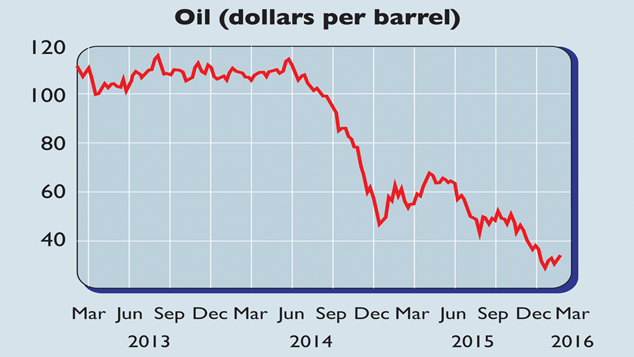Have oil prices hit bottom?
Oil prices jumped last Tuesday on news of a deal to freeze production between Saudi Arabia and Russia – but not for long.


Oil prices jumped last Tuesday on news of a deal to freeze production between Saudi Arabia and Russia, but finished the week pretty much where they started it. That's "probably a fair reflection" of the deal's significance, says Malcolm Graham-Wood on MalcysBlog.com. A freeze on production, while "laudable, ain't going to change the market". There is still a glut, which will look even worse next month when refiners do their usual maintenance ahead of the driving season and thus cut back on buying oil in the market.
Even the agreement not to raise output at record highs in both countries depends on other countries signing up, adds the Financial Times. Heavyweight producer Iran, keen to secure market share as sanctions are eased, hasn't exactly rushed to endorse the deal. "Short of a revolution in Riyadh", says Nick Butler in the same paper, it's hard to see prices going above $50 a barrel for three years.
But is the bearishness in the oil market overdone? An immediate price surge may be off the table, but prices could well have hit bottom. They've held above $30 for a month; the glut increasingly looks to be "priced in"; and the Russia-Saudi deal (the first between a member of oil cartel Opec and a non-member for 15 years) shows producers are willing to explore ways of eventually cutting output.
MoneyWeek
Subscribe to MoneyWeek today and get your first six magazine issues absolutely FREE

Sign up to Money Morning
Don't miss the latest investment and personal finances news, market analysis, plus money-saving tips with our free twice-daily newsletter
Don't miss the latest investment and personal finances news, market analysis, plus money-saving tips with our free twice-daily newsletter
Meanwhile, drilling activity, and hence future output in America, continues to fall. The number of operational oil rigs has fallen to just over 500 from 2,000 a few years ago, says Liam Halligan in The Sunday Telegraph. With the International Energy Agency expecting supply and demand to rebalance by 2017, prices may begin to tick up as investors look forward to the glut disappearing.
And once they do turn the corner, they could rise faster than everyone expects, says the FT'sJohn Dizard. This is due to the structure of the oil futures market. At present oil producers have heavy debt loads or large populations to keep happy, so they have kept pumping oil despite ample supplies. This has fuelled demand for storage and driven up the price of oil futures compared to spot prices, creating a pattern called "contango".
This in turn has prompted speculators to reinforce the trend and price pattern via an oil "cash-and-carry trade": selling short-dated oil and buying long-dated futures. But once investors think the spot price is set to rise, they will unwind their positions, sending futures prices down and spot prices up just as currency carry trades can quickly unwind and move prices. If oil has hit "peak bear", you may be surprised at how fast it snaps back.
Get the latest financial news, insights and expert analysis from our award-winning MoneyWeek team, to help you understand what really matters when it comes to your finances.

-
 Boost for over 100,000 families on Child Benefit as new HMRC payment system rolled out
Boost for over 100,000 families on Child Benefit as new HMRC payment system rolled outThousands of households will no longer have to pay the dreaded High Income Child Benefit Charge through self-assessment
-
 Are you being haunted by the ghost of Christmas past? How festive cutbacks could boost your long-term wealth
Are you being haunted by the ghost of Christmas past? How festive cutbacks could boost your long-term wealthThe average family spends around £1,000 over the Christmas season. Here’s how much you could have gained if you had invested some of the money instead.